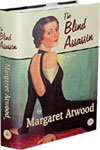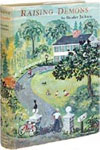DE GRADEST BOBALITION DAT EBER VUS BE!!! 4rt ob July, 1827, cum on de 5ft.
From
Michael Brown, Philadelphia, PA, U.S.A.
Seller rating 5 out of 5 stars
![]()
AbeBooks Seller since 4 June 1998
About this Item
Description:
Broadside, 19 ¾?h x 11 ?? wide at greatest extent, uncolored. Six lines of headline type surrounding two cuts, followed by two columns of text with a typographic divider. Minor-moderate soiling and staining, creasing along old folds, small losses at fold intersections affecting a few letters but not the sense, some losses along left edge well away from printed area. The ?Bobalition? broadside as a specific genre of American racism originated in Boston as a series of so called ?bobalition? broadsides, which appeared in Boston between at least 1816 and appearing regularly at least up to 1837. The example offered here is the only known example of its kind to have originated in New York City. This example is an extremely rare 1827 ?Bobalition? broadside featuring a crudely racist parody of New York City?s first Emancipation Day celebration. The ?Bobaltition? broadside, in newly contrived pseudo-black dialect of mispronunciations and malapropisms, made fun of the annual festivities of the Boston African American community commemorating the closing of the slave trade in 1808. These Abolition Day celebrations were a holiday for northern free blacks, usually celebrated on January 1, but in Boston held on July 14th as a contra July 4th celebration. In the broadsides ?Abolition? was transmogrified into ?Bobalition,? thus giving the name to this genre. Public parades and assemblies were common forms of civic expression in early America, and the Abolition Day celebrations were assertions of citizenship by the free blacks of the North. These were sober and solemn events, and the several printed sermons and speeches on the occasion by African Americans comprise an important and early genre of African American writing. The Bobalition broadsides reflect the growing racial antagonism among whites, who resented competition from black labor and increasingly denied any role for African Americans in American political and civic life. In the broadsides the grotesque dialect is a marker of African American inferiority, portraying the notion of black civic and political equality as ridiculous and threatening. They seem, as historian David Waldstreicher describes, ?important artifacts in the history of American racism.? Similar celebrations were inaugurated in New York City in 1827, when on July 4th an 1817 law took effect that completely abolished slavery in New York State. On that date, some 4600 enslaved African Americans in the city were freed, and the first ?Emancipation Day? was celebrated on July 5th (The 5th may have been chosen so as to reduce the risk of conflict with inebriated whites during Independence Day festivities.) ?The largest celebration in New York City on July 5, 1827, saw 2,000-4,000 celebrants gather at St. John?s Park, led by marshal Samuel Hardenburgh. Numerous groups participated; the first in the parade line was the New York African Society for Mutual Relief. From the park, they paraded to Zion Church, and then to City Hall on Broadway where they met Mayor William Paulding Jr.? (Wikipedia) Sadly, emancipation meant neither racial equality nor harmony: In 1821 the New York Constitution had been amended to extend universal suffrage to all white males while restricting it to only those African American males who owned substantial property. In 1834, violence broke out at an integrated Emancipation Day celebration at the city?s Chatham Street Chapel. This spiraled into the week-long anti-abolitionist riots, ultimately put down by the State Militia. ?De Gradest Bobalition Dat Eber Vus Be!!!? The 1827 Emancipation Day celebration catalyzed the issue of this broadside, which to my knowledge is the only example of the ?Bobalition? genre printed in New York City. As with the many ?Bobalition? texts issued in Boston, the anonymous author sought to create a jarring contrast between the formality of structure and tone and the supposed African American English spelling and syntax, w. Seller Inventory # 030853
Bibliographic Details
Title: DE GRADEST BOBALITION DAT EBER VUS BE!!! 4rt...
Publisher: 285 Water-street, [J. M?Clelland], [New York City]
Publication Date: 1827
Binding: No Binding
Condition: Very Good
AbeBooks offers millions of new, used, rare and out-of-print books, as well as cheap textbooks from thousands of booksellers around the world. Shopping on AbeBooks is easy, safe and 100% secure - search for your book, purchase a copy via our secure checkout and the bookseller ships it straight to you.
Search thousands of booksellers selling millions of new & used books
New & Used Books
New and used copies of new releases, best sellers and award winners. Save money with our huge selection.
Rare & Out of Print Books
From scarce first editions to sought-after signatures, find an array of rare, valuable and highly collectible books.



